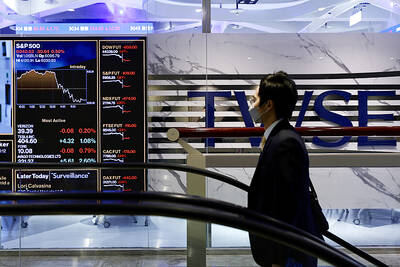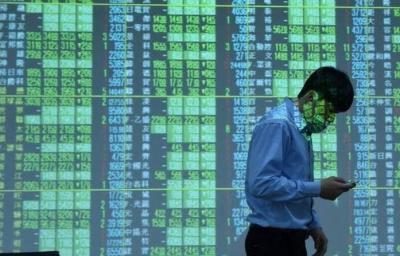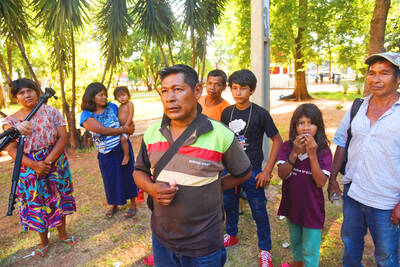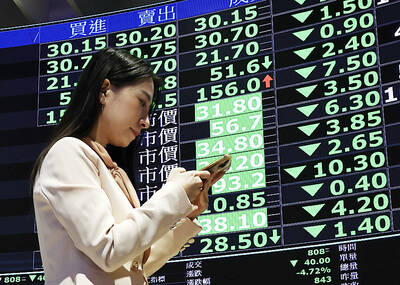Copenhagen Infrastructure Partners (CIP) yesterday urged the government to keep next year’s purchasing price for offshore wind energy at current levels to reflect higher risk hedging costs.
The Ministry of Economic Affairs is expected to publish its proposed offshore wind energy purchase price before the end of this month and finalize its decision in December.
CIP urged the government to maintain this year’s price of NT$5.8 (US$0.19) per kilowatt-hour, as further cuts would stifle the nation’s efforts to create a homegrown industry to harness offshore wind energy, CI Wind Power Development (Taiwan) Co chief financial officer Keith Hsu (徐正穎) said at a media gathering.
A reasonable price would ensure that offshore wind farm developers have enough time to build a local supply chain and meet the government’s renewable energy and local content targets, Hsu said.
CIP last year began risk analysis services on behalf of lenders for insurance company Aon PLC, which revealed that Taiwanese offshore wind power projects have a considerably higher risk compared with similar projects in Europe.
Apart from frequent typhoons and earthquakes, Taiwan also has higher exposure to foreign-exchange volatility as well as elevated geopolitical tension as relations with China sour, Aon chief technical officer Clive Lin (林彥碩) said.
A 300-megawatt project in Taiwan costs between NT$320 million and NT$440 million more than a similar project in Europe, Lin said.
Taiwan also has higher construction fleet rental fees as vessels must sail long distances to work on projects, while the readiness of the local supply chain still remains a concern for investors, he said.
As a result, the government has underestimated the cost of offshore wind projects by neglecting risk hedging provisions, he added.

SELL-OFF: Investors expect tariff-driven volatility as the local boarse reopens today, while analysts say government support and solid fundamentals would steady sentiment Local investors are bracing for a sharp market downturn today as the nation’s financial markets resume trading following a two-day closure for national holidays before the weekend, with sentiment rattled by US President Donald Trump’s sweeping tariff announcement. Trump’s unveiling of new “reciprocal tariffs” on Wednesday triggered a sell-off in global markets, with the FTSE Taiwan Index Futures — a benchmark for Taiwanese equities traded in Singapore — tumbling 9.2 percent over the past two sessions. Meanwhile, the American depositary receipts (ADRs) of Taiwan Semiconductor Manufacturing Co (TSMC, 台積電), the most heavily weighted stock on the TAIEX, plunged 13.8 percent in

A wave of stop-loss selling and panic selling hit Taiwan's stock market at its opening today, with the weighted index plunging 2,086 points — a drop of more than 9.7 percent — marking the largest intraday point and percentage loss on record. The index bottomed out at 19,212.02, while futures were locked limit-down, with more than 1,000 stocks hitting their daily drop limit. Three heavyweight stocks — Taiwan Semiconductor Manufacturing Co (TSMC, 台積電), Hon Hai Precision Industry Co (Foxconn, 鴻海精密) and MediaTek (聯發科) — hit their limit-down prices as soon as the market opened, falling to NT$848 (US$25.54), NT$138.5 and NT$1,295 respectively. TSMC's

In a small town in Paraguay, a showdown is brewing between traditional producers of yerba mate, a bitter herbal tea popular across South America, and miners of a shinier treasure: gold. A rush for the precious metal is pitting mate growers and indigenous groups against the expanding operations of small-scale miners who, until recently, were their neighbors, not nemeses. “They [the miners] have destroyed everything... The canals, springs, swamps,” said Vidal Britez, president of the Yerba Mate Producers’ Association of the town of Paso Yobai, about 210km east of capital Asuncion. “You can see the pollution from the dead fish.

TARIFFS: The global ‘panic atmosphere remains strong,’ and foreign investors have continued to sell their holdings since the start of the year, the Ministry of Finance said The government yesterday authorized the activation of its NT$500 billion (US$15.15 billion) National Stabilization Fund (NSF) to prop up the local stock market after two days of sharp falls in reaction to US President Donald Trump’s new import tariffs. The Ministry of Finance said in a statement after the market close that the steering committee of the fund had been given the go-ahead to intervene in the market to bolster Taiwanese shares in a time of crisis. The fund has been authorized to use its assets “to carry out market stabilization tasks as appropriate to maintain the stability of Taiwan’s